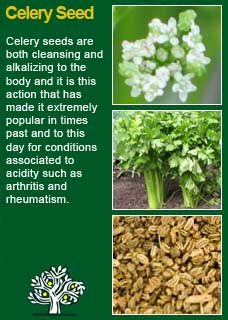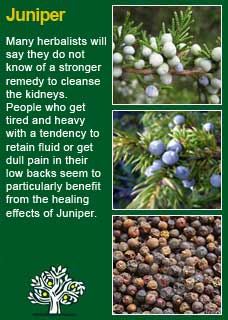
|
|
||||
| Our Pages ABOUT CONSTITUTIONAL MEDICINE
|
In herbal medicine, it is the tubers of Devil’s claw; surely the most alarmingly named herb in our dispensary! I understand that the name Devil’s claw comes partly from what the thorny fruits of this South African bush look like and partly what it feels like if you stand on it!
Devil’s claw is highly regarded in herbal medicine as a natural treatment for inflammatory joint and muscle conditions. The stiff, inflammatory joints of arthritis are its most common reason to be used but it has also been widely used for rheumatism, gout, sciatica, lumbago, muscle inflammation (myalgia) and tendonitis. Devil’s claw is also thought to have an action on the liver, and it has been traditionally used for chronic itchy skin conditions and swollen varicose veins. Andrew Chevallier writes 'Devil's claw is native to Namibia, Botswana and South Africa, where it is a protected species due to over-harvesting of wild plants. Propagated from seed in spring, the young tubers are unearthed in autumn and cut into 2cm pieces. Care is taken not to mix the tubers, which contain the active ingredients, with the roots, as this can render the herb ineffective. Devil's claw is used by various peoples in southern Africa, including the Khoisan and the Bantu. Traditionally it has been used as a tonic, especially for digestive problems, for arthritis and rheumatism, to reduce fevers, and as an ointment for sores, ulcers and boils' The renowned German herbalist, Rudolph Weiss M.D, wrote that 'the main indication for Devil’s claw is arthritis and back pain due to spondylosis, others include chronic inflammatory polyarthritis, neuralgia and headache'. The dose range recommended by Weiss for Devil's claw gives a good idea as to how much can be needed. He says 'The recommended daily dose is 1.5 gms of the drug for loss of appetite and 4.5 gms for rheumatic disease. The tea is prepared by pouring two cups of boiling water on one teaspoonful (1.5gms)* or one tablespoon full (4.5 grams) of the finely chopped or coarsely powdered drug; this is allowed to stand for 8 hours at room temperature, then strained. The tea prepared in this way can then be divided into two or three doses to be taken warm shortly before meals' The British Herbal Pharmacopoeia (BHP) describes the actions of Devils' claw as 'anti-inflammatory, antirheumatic, analgesic, sedative, diuretic and says it is indicated for 'rheumatism, arthritis, gout, myalgia, fibrositis & lumbago' and specifically indicated for 'rheumatic disease'. The BHP recommends doses of 0.1-0.25grams or the 25% 1:5 tincture at a dose of 0.5-1ml. Thomas Bartram writes that the actions of Devils' claw include 'anti-inflammatory, antirheumatic, analgesic, liver tonic, cholagogue, diuretic, sedative, detoxicant, stomachic, lymphatic, stimulant, cortisone-like action' He suggests uses for it including inflammatory arthritis, stiff joints, gout, lumbago, sciatica, polymyalgia, neuralgia, liver congestion, gall bladder disorders, itching skin conditions, inflammatory conditions of the veins. Bartram suggests doses of a quarter to half a tsp in each cup of water gently simmered for 15 minutes and then a dose of half a cup, or a 1-2 ml of the tincture. He recommends to avoid it in pregnancy and not to use it in the presence of gastric or duodenal ulcer.
~ There is a growing body of scientific evidence suggesting that devil's claw is safe and beneficial in the management of pain related to degenerative joint disease or osteoarthritis. It may be equally effective as drug therapies, such as non-steroidal anti-inflammatory drugs, or may allow for dose reductions or cessation of these drugs in some patients (Gagnier JJ, Chrubasik S, Manheimer E. Harpgophytum procumbens for osteoarthritis and low back pain: a systematic review. BMC Complement Altern Med 2004;4:13) ~ There are also several controlled human trials supporting the use of devil's claw for the treatment of low back pain (Gagnier JJ, van Tulder MW, Berman B, Bombardier C. Herbal medicine for low back pain. A Cochrane review. Spine 2007;32:82-92) In a randomised, double-blind, controlled, multicentre study, Devil's claw taken over a period of 4 months significantly reduced functional disability and pain in patients with osteoarthritis of the knee and hip and it was shown to be as effective as the analgesic drug diacerhein. The number of patients using NSAIDS (non-steroidal anti-inflammatory drugs) and other pain-killers at the end of the study, and the frequency of adverse reactions, was significantly lower in the at the Devil's claw group. The daily dose was 2.6 grams of freeze-dried Devil's claw powder containing 87mg of iridoid and 57mg of harpagoside (Chantre P et al: Phytomed 7(3):177-183, 2000) (Leblan D, Chantre P, Fournie B: Joint Bone Spine 67(5):462-467, 2000) ~ In a randomised study in patients with back pain treatment with Devil's claw extract for 4 weeks demonstrated a significant reduction of pain compared to placebo and more patients in the treatment group were pain free at the end of the study. A similar study confirmed these results with more patients receiving the Devil's claw pain free at the end of another 4-week trial (Chrubasik S et al: Eur J Anaesthesiol 16(2):118-129, 1999) ~ In a large uncontrolled study of patients with various rheumatic illnesses, 42% to 85% showed significant improvement after 6 months treatment with Devil's claw extracts: 75 to 225 mg/day of iridoid glycosides (Belaiche P: Phytotherapy 1982:1:22-28) ~ Researchers Czygan and Hiller explain that it is used “as an antirheumatic and for supportive treatment of degenerative painful rheumatic disorders'. Clinical reports of its analgesic and anti-arthritic actions have been available since the 1950’s, which have been confirmed through modern studies. "Good therapeutic results have been achieved using Devil’s claw extracts in therapy of degenerative diseases of the musculoskeletal system and degenerative disorders of the locomotor system as well as in the treatment of severe low back pain in placebo-controlled double-blind clinical studies. ~ There are well over 100 published studies and articles on Devil's claw, a PDF showing their titles, authors and when and where they were published can be found here
Also, as a herb that has strong effects on the digestive system, this remedy may cause an upset stomach to some individuals when used in high doses and it is recommended to be used with care for people who have a sensitive gut and to be avoided if there is an actively inflamed digestive lining.
For some years now, against this proven and safe way of herbalism, there has been a rising tide of excessive caution and scare-mongering in many parts of the world. The same authorities that, not so long ago, decried herbal medicines as ineffectual, have now taken up a different adversarial position; that they are dangerous substances that should only be prescribed by Doctors, who of course have zero training in them. Unfortunately, the same unnecessary fear and worry has crept into many natural health websites and popular publications on herbs. Herbs that we have safely used for thousands of years, that have no reports of adverse reactions in the medical literature despite widespread use by millions of people, are suddenly described as contraindicated because of something that should have been seen as completely unimportant, or at the utmost a merely theoretical concern, such as a laboratory study on one of the herb's constituents to use an all too common example. I wonder sometimes if the writers of such articles feel that the herb will be more deserving of respect if it is thought to be a little bit dangerous, in other words more like a drug than something that has simply come out of the earth and been used by ordinary people for generations beyond count. There is just so much misinformation about herbal medicine on the internet now. Ludicrous claims and cautions abound in equal measure; it seems like one group are trying to make money out of the public whilst the other are busily trying to scare them off. I have to believe that the kind of reader who takes the time to read pages on herbs that are as extensive as this one is much less likely to be swayed by marketers or misinformers. I hope that you will keep your wits about you if you get conflicting opinions from people who have never really got to know these herbs, who have never worked with them, or learned how to use them safely and effectively. I want to remind you that the reason that herbs can never be patented and owned by any individual or corporation is because they are, and always will be, the People's medicine. They belong to all of us and it is my great hope in sharing this work that you will learn how to use them wisely for yourself, and the people you care for. Be safe, but do not be afraid.
I have much respect for the potency of Devil's claw and have seen that, when it is taken at an adequate dose over a good time frame, that it can help to shift stuck pain and inflammation in the body. Devil's claw is a deep-acting medicine with stimulating, warming and cleansing effects in the body and I have seen many good results when using it for people with chronic inflammatory conditions. If you who are reading this are studying herbal medicine or if you simply want to understand such a great plant ally at much a deeper level I recommend the old practice of taking a small dose of it and then, with a quiet and attentive mind, observing what you then experience through that remarkable laboratory you have by virtue of simply being born - your own body! Devil's claw has a deep penetrating bitterness which will be a challenge to you if you are not used to such a taste but if you stay with it (i.e. don't rush to eat or drink something) I know you will feel for yourself just how deeply this herb can penetrate into your body. For myself I feel this action like a kind of 'heat-seeking missile!' You can feel exactly how it seeks out heat in the form of stuck inflammation and then starts up a kind of persistent and insistent nudging that says 'go on, get moving'. There is no deeper and more stuck inflammation that a person can get in their body than that which takes up residence in the joints - to take up a healing journey with such a problem that is not merely seeking to mask and suppress the symptoms (i.e. with anti-inflammatory drugs) we need a most powerful ally along the way and this could well be the root of this peculiarly powerful plant. Further to this, if you would like to learn more about the ancient art of pulse testing, a simple but powerful way to ask the intuitive intelligence of the body for its responses to a herb by feeling the pulse whilst giving a tiny dose by mouth, read here Dosage is always a critical part of the success of herbal medicine and, in the case of Devil's claw, I believe it is not only possible to give too little, which is a common fault of commercial herbal medicine, but also to give too much. Devil's claw is a powerful herb; too much may upset the gut and make the medicine too hard to sustain, but of course too little will not achieve the benefit of the herb either. To make things more complex, too little for one person will be too much for another and vice versa! Rather than put this in the too-hard basket, this is a classic example where knowing a person's constitution can immediately give a helpful template for what kind of dose of Devil's claw will be well tolerated and will work well. This subject, including how to work out what constitution you are, is introduced further at the end of the page. Tigers, hot and damp, can take a lot of it, the kinds of dosages that Weiss is describing at the top of the page in tincture form could be as much as 3 or even 4 mls twice a day, though I would be likely to start at 2 mls, twice a day, to see how they were responding to it. I should also share here that I would be unlikely to use a decoction of Devils; claw because, in treating arthritis etc, one must be prepared for a long journey and it will be orders of magnitude more practical to give a concentrated liquid to use twice a day than to expect the patient to brew up and take as bitter a tasting a decoction as Devils' claw every day for weeks or even months! At the opposite side of the constitutional spectrum is the Elephant/Butterfly constitution, cool and dry, who can also potentially get great benefit from Devil's claw, and may well need it as they age, but I would use a quarter of that dose to start with, i.e. just 1 ml twice a day, or even a little less, for the first few weeks and then only to increase the dose if they felt it wasn't helping. The Bear, cool and damp, and the Eagle, hot and dry, I think sit somewhere in the middle, e.g. 1 to 2 mls twice a day, but if they had any history of digestive troubles or if I thought they only needed some gentle support as their condition was not too advanced, then I would likely start them at 1 ml, twice a day at a time as well. Devils' claw is a powerful herb, the benefit of it will come more by using it at a safe dose over a sustained time frame than by trying to get a quick, drug-like action with a high dose in a hurry. If in doubt, start low and gradually build it up. The right dose is the one that works, more is not better. Devil's claw combines particularly well with Celery seed and Juniper berry for arthritis in specific joints and with Celandine and Dandelion root for conditions that involve rheumatic pains that move around the body.
Much of the information here about the traditional uses of Devil's claw is consistent with the model of thinking whereby one may treat problem A with plant B. There is value in this approach, especially in how it helps us pass on useful knowledge to one another, but it falls short in one vital area; and that is that people are not all cut from the same cloth! Something that works brilliantly for one person may do less for another -- why is this? Part of the reason is that people vary in their constitutions as to whether they are either hotter or cooler and, at the same time, either dryer or damper. This useful and rather fascinating subject is introduced further here Another big part of using the right herb when it is most needed comes from understanding the need to treat what is going wrong for the person that had led up to their getting a health condition. In this light, Devil's claw can particularly offer its benefits when a cleansing action is needed in the 'cycle of healing', more about this here
Please understand that I cannot advise you, including on products or dosage, without seeing you in person in my clinic but for ideas
on how you might find a good herbalist in your area read here |
|
|
© 2011 R.J.Whelan Ltd











